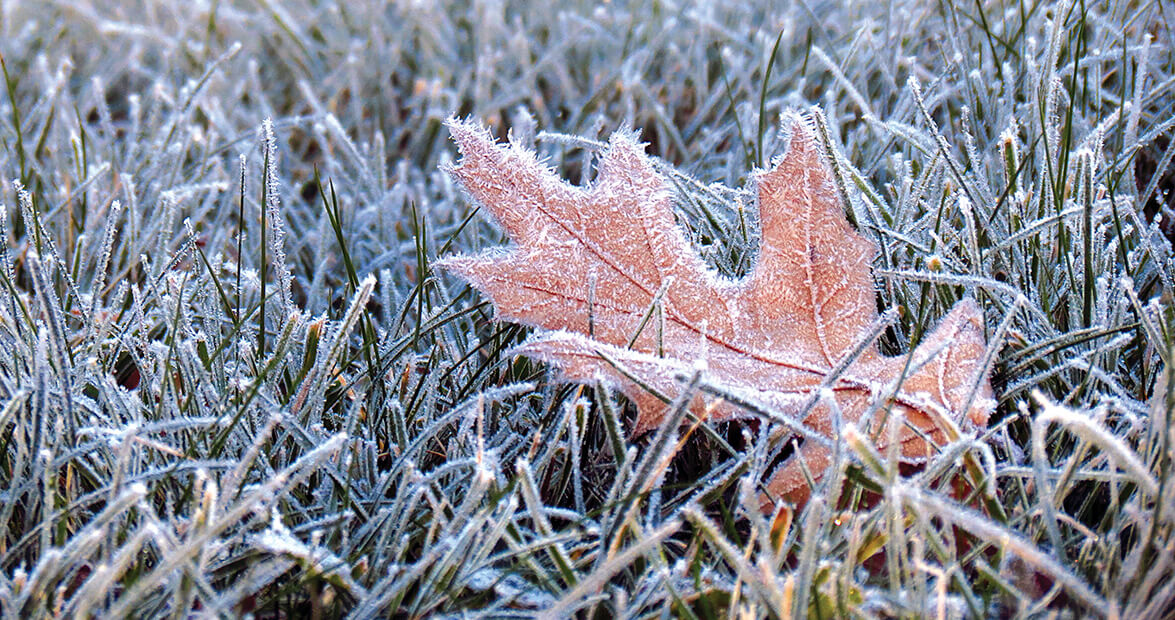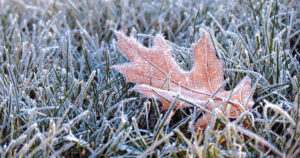Be-a-Better Gardener Preparing for the First Fall Frost
Consider the topography of your yard when watching for the elusive first frost of the season.
By Thomas Christopher
This is the time of year when I start watching for the first fall frost; it’s early yet, but it doesn’t hurt to be prepared. Because the first frost of autumn is a watershed date (it doesn’t end the gardening season), there’s always something more to do – but it does change its focus. The first frost marks the time when you should have harvested all tender vegetable crops and have brought the houseplants back indoors. Of course, there are things you can do to mitigate its impact. If you can predict the arrival of the first fall frost accurately, you can provide temporary protection to frost-sensitive plantings and potentially extend their season by a few weeks.
In fact, it’s not so hard to predict when the first frost of fall will arrive. You can get a ballpark figure by referring to any of several online interactive calendars: you type in your postal code and the calendar replies with the average date when the first fall frost arrives in your area. One example of such a program is the one that The Old Farmer’s Almanac maintains at https://www.almanac.com/gardening/frostdates.
It’s important to note that the date you get in this fashion is only an average one. This means that during most years the first frost will actually come sooner or later. But it does alert you to when to start watching.
Predictions from the weatherman are also helpful, of course, though experience has taught all of us that those are fallible. This is especially true in New England and upstate New York where the terrain is so varied. We have lots of microclimates, spots where the temperature regularly runs warmer or cooler than the average for the surrounding area. This is why I like to check the weather person’s predictions with observations of my own.
When watching the weather there are two factors to which you should pay special attention. The first is the fact that the earth is a collector of solar energy. All day long the ground absorbs heat from the sunlight and it re-radiates that after nightfall. The second factor is that cold air is heavier than warm air, which means that it runs downhill like water.
Because mist or clouds act like insulation to trap the heat re-radiating from the earth, a frost is far less likely on cloudy or misty nights. Generally, the first frost comes on a clear night. Also, it’s far more likely to come on a night when the air is still: the cold air can settle down near the ground then and concentrate the low temperatures. A slight breeze, in contrast, will mix the air, diluting the cold air at ground level with the over-lying warmer air and so tend to ward off frost. A strong wind, by contrast, can sweep away the warm air, and if it comes from a cold quarter like the north, it can help to bring frost.
Another factor to consider when watching for frost is the topography of your yard. Because cold air runs downhill, a garden at the base of a slope, especially one in a hollow, is far more in danger from frost than one on the side of a hill. Even within a landscape, low-lying pockets are much more in danger from frost than adjacent hillocks – we’ve all seen how snow persists in such pockets when it has melted elsewhere in the yard. Also, a barrier that runs across a hill such as a hedge or a fence will act as a dam to stop the cold air that is running down from higher up. The cold air will pool on the uphill side of the barrier, increasing the risk of frost there.
There are degrees of frost. A light frost is one in which the temperature just dips below 32°F. and typically, covering tender plants with old bedsheets or floating row covers, or even just over-turned pots, will allow them to weather such an episode. A hard frost, one in which the air temperature drops below 25°F. for four consecutive hours or more, is much more problematic and likely to defeat your efforts at protection.
If and when such a “killing frost” does befall your garden, it’s time to tuck it in and enjoy the colors of autumn.
Thomas Christopher is the co-author of “Garden Revolution” (Timber Press, 2016) and is a volunteer at Berkshire Botanical Garden. berkshirebotanical.org
Be-a-Better-Gardener is a community service of Berkshire Botanical Garden, one of the nation’s oldest botanical gardens in Stockbridge, MA. Its mission to provide knowledge of gardening and the environment through 25 display gardens and a diverse range of classes informs and inspires thousands of students and visitors on horticultural topics every year. Thomas Christopher is the co-author of Garden Revolution (Timber press, 2016) and is a volunteer at Berkshire Botanical Garden. berkshirebotanical.org.




